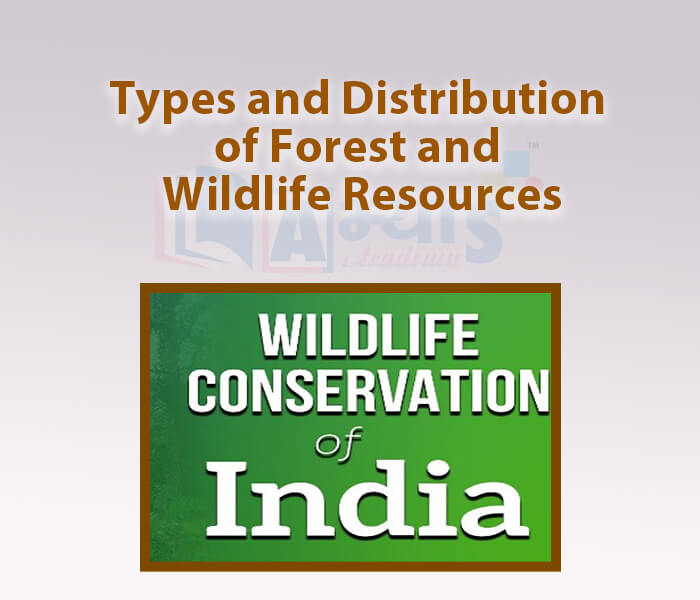Types and Distribution of Forest and Wildlife Resources










Types and Distribution of Forest and Wildlife Resources
In India, much of its forest and wildlife resources are either owned or managed by the government through the forest department or other government departments. Traditionally the involvement of local communities in natural resource management was neglected, now their role is also taken seriously. The forests are classified under the following categories:-
Reserved Forests:
Forests owned by the government in which all activities are prohibited, unless specifically allowed. They are regarded as the most valuable forests. They constitute about 55 per cent of the area of forests in India.
Protected Forests:
Forests owned by the government in which all activities are allowed, unless specifically restricted. These forests are protected from any further depletion. They constitute about 29 per cent of the area of forests in India.
Unclassed Forests:
These forests and wastelands are mostly managed by private communities and individuals. Some are owned by the government also. They constitute about 16 per cent of the area of forests in India. Reserved forest and protected forests collectively called permanent forest estates and used for timber and other forest products and protection of wildlife.
Plants are depends on which of the follwoing: | |||
| Right Option : A | |||
| View Explanation | |||
Which statement are true about Forests and wildlife resources? | |||
| Right Option : B | |||
| View Explanation | |||
Plants depend on which of the following: | |||
| Right Option : A | |||
| View Explanation | |||
Students / Parents Reviews [10]
It was good as the experience because as we had come here we had been improved in a such envirnment created here.Extra is taught which is beneficial for future.

Eshan Arora
8thAbhyas Methodology is very good. It is based on according to student and each child manages accordingly to its properly. Methodology has improved the abilities of students to shine them in future.

Manish Kumar
10thMy experience with Abhyas is very good. I have learnt many things here like vedic maths and reasoning also. Teachers here first take our doubts and then there are assignments to verify our weak points.

Shivam Rana
7thMy experience was very good with Abhyas academy. I am studying here from 6th class and I am satisfied by its results in my life. I improved a lot here ahead of school syllabus.

Ayan Ghosh
8thA marvelous experience with Abhyas. I am glad to share that my ward has achieved more than enough at the Ambala ABHYAS centre. Years have passed on and more and more he has gained. May the centre flourish and develop day by day by the grace of God.

Archit Segal
7thI have spent a wonderful time in Abhyas academy. It has made my reasoning more apt, English more stronger and Maths an interesting subject for me. It has given me a habbit of self studying

Yatharthi Sharma
10thIt was a good experience with Abhyas Academy. I even faced problems in starting but slowly and steadily overcomed. Especially reasoning classes helped me a lot.

Cheshta
10thAbhyas is a complete education Institute. Here extreme care is taken by teacher with the help of regular exam. Extra classes also conducted by the institute, if the student is weak.

Om Umang
10thIt has a great methodology. Students here can get analysis to their test quickly.We can learn easily through PPTs and the testing methods are good. We know that where we have to practice

Barkha Arora
10thBeing a parent, I saw my daughter improvement in her studies by seeing a good result in all day to day compititive exam TMO, NSO, IEO etc and as well as studies. I have got a fruitful result from my daughter.
